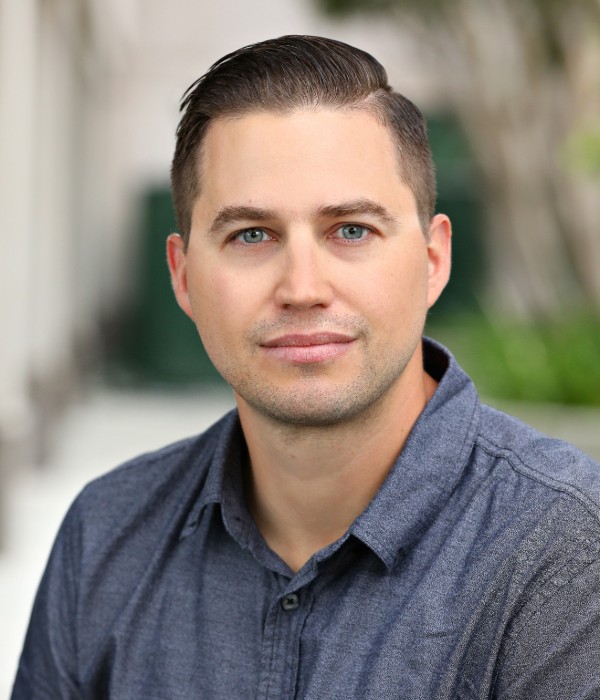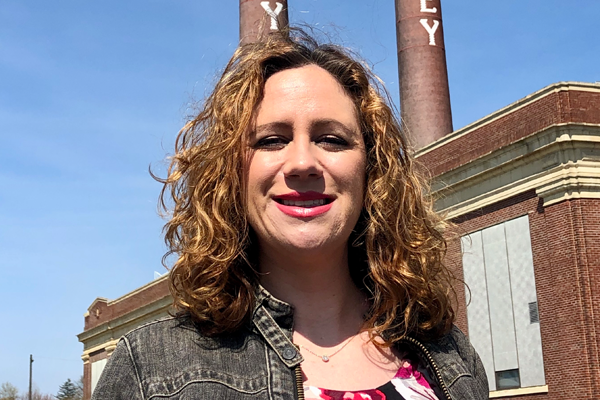By: Nina Notman

“I fell in love with surface science during my PhD,” says Cassandra Reese. "It's really interesting and can support so many different applications," she adds.
In October 2020, Reese joined the surface science team at Roswell Biotechnologies, a life-sciences start-up in San Diego that is developing technology to “read” the sequence of DNA. The three main applications Roswell is focusing on are personalized precision medicine; next-generation diagnostics for infectious diseases, including the detection of COVID-19; and the storage of data in DNA.
The firm’s DNA sequencing technology relies on complementary metal-oxide semiconductor, or CMOS, chips. She uses organic molecules to functionalize the interface between the metal electrode on the CMOS chip and the molecular wire used to complete the sensing circuitry. “There's a lot of fundamental unprecedented work that goes into modifying surfaces and then characterizing them at a nanoscale” Reese says.
Prior to joining Roswell, Reese did a postdoc at Los Alamos National Laboratory (LANL) for 17 months. “I was focused on 3-D printing for national security applications,” Reese says.
Her postdoc was preceded by a polymer science and engineering PhD at the University of Southern Mississippi and a bachelor’s degree in chemistry at the University of San Diego.
What instruments can't you live without in the lab?
A goniometer—this tool measures the surface tension, interfacial tension, and water contact angle. It can tell us if a surface is hydrophilic or hydrophobic. And an XPS (X-ray photoelectron spectrometer)—a tool used to determine the elemental composition, chemical state, and electronic state of elements on surfaces.
What was the last experiment you ran?
Yesterday, I set up about 25 surface-functionalization reactions to run over night. These will be used for stability experiments to look at how our molecules behave on surfaces over the course of a few weeks.
What's the most exciting project you've worked on before joining Roswell?
3-D printing hierarchical porous heat wicks, which can be used in heat-pipe applications. Heat pipes are heat-transfer devices that have applications such as computers and nuclear reactors that work in space. Being able to 3-D print these wicks has a lot of potential to enable rapid manufacture at low cost.
Who are your mentors?
Outside of work, there are two people who I really look up to and seek advice from: my undergraduate advisor Peter Iovine and my graduate advisor Derek Patton.
What's the best piece of career advice you've been given?
Don’t be scared to take on new opportunities. Many people deal with impostor syndrome and failure, but you are not alone. Don’t ever be afraid to seek out help.
What's the most interesting object that you’ve seen 3-D printed?
My team at LANL and I had a lot of fun 3-D printing random things such as a T-Rex head or a Pikachu.
What’s the best thing about your current role?
I’m a surface scientist but I get to work every day with protein engineers, biochemists, mechanical and electrical engineers. It's a really good environment to be able to learn all these new things. It’s also very fast paced and that fits my personality.
Where do you see the field of DNA sequencing going in the next 10 years or so?
The ability to read DNA faster and cheaper is only the beginning, and we see a path where DNA will routinely inform tailored healthcare decisions.
If you weren't a scientist, what would you like to be?
I've always been into watching crime shows, like Criminal Minds, so I think I’d have liked to have been an FBI agent or similar.
What's the best thing about living in California?
Being close to family and the ocean. Also, the weather and being able to get really good Mexican food.
This article has been edited for length and clarity. The opinions expressed in this article are the author's own and do not necessarily reflect the view of their employer or the American Chemical Society.
Copyright 2021 American Chemical Society (All Rights Reserved)











